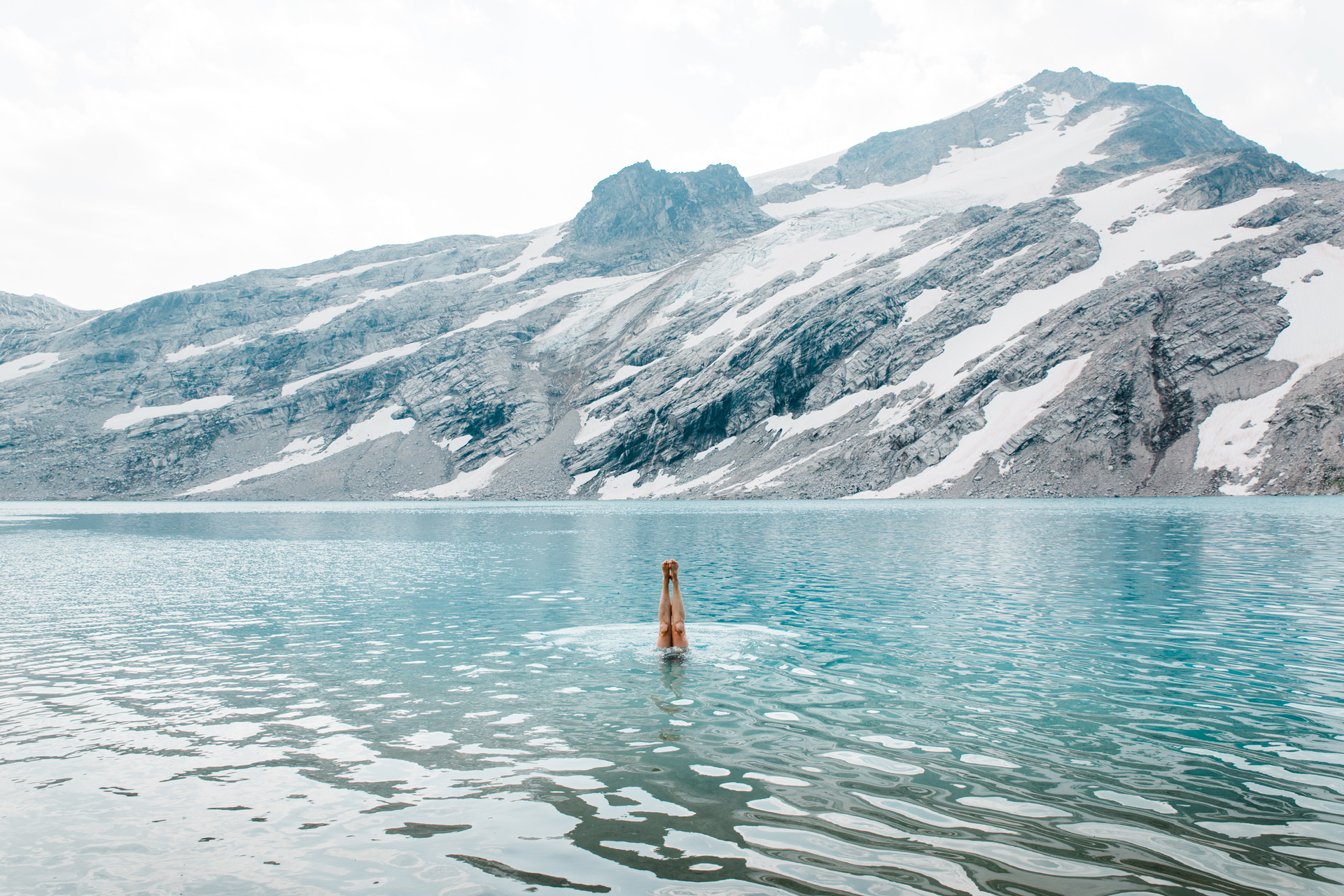For all the awe and beauty found out in the mountains (and trust us, there are several universes-worth of eye-bulging, jaw-flopping beauty out there), there are some things that might appear puzzling, mysterious or even strange.
Why are those lakes SO blue, or green even? Wait, why do the trees grow so small up high in the mountains?
It’s high time that those questions were answered. We’ll take the lead here, especially since we come across blue lakes and tiny trees aplenty around our CMH lodges in the summer.

Why are glacial lakes so blue?
You know the ones. Those beautiful glacial lakes with the gloriously blue-green colour that are often mistaken for some Instagram filtering and indulgent post-processing, seen on postcards the world over.
The colours sure are vibrant, aren’t they? They are caused, in large part, by the glaciers themselves. Stay with us. First, imagine glaciers as a flowing river of ice. They are actually moving, just really, really slowly. And when there’s enough mass moving slowly, it crushes things in its path.
So, all the gravel that sits on top of the base bedrock is pushed down by the glacier, carving out the bedrock itself. That’s where those long parallel lines you might see on flatter surfaces of rock near glaciers come from. The correct term is striations. They’re grooves scratched into the bedrock surface by all the little gravel pieces that got lodged in the bottom of the moving glacier.
READ NOW: CMH CARIBOOS: THE LAND OF GLACIERS
Flour… but not the Betty Crocker kind
As those grooves are carved out, it creates what’s called ‘rock flour.’ That fine silt enters the meltwater as the glacier recedes, ending up in lakes. The flour itself is so small that it becomes suspended in the water, giving the water the appearance of being cloudy and coloured. And depending on the density of the rock flour, you get different colours in the lakes. Typically, blues and greens are seen most often here in western Canada, but other colours can be found, too.
Ultimately, the vibrant colours of lakes like Lake Louise, Moraine Lake and Buehler Lake at CMH Cariboos are owed to the mechanical grinding of the moving glacier over top of the bedrock surface and all the rock flour flowing into those bodies of water.
READ NOW: THINGS TO DO IN LAKE LOUISE

Why are trees near the alpine so short?
When you start a hike in the valley, you might have noticed that the trees are big. But as you get closer to the subalpine/alpine zones, they get smaller and smaller. What gives?
This is a common question we hear a lot during our heli-hiking trips. The alpine generally refers to the area above the treeline. It’s too difficult for mountain trees to grow up there. The subalpine environment is a place of transition, moving from the dense forests below to the alpine above. Trees grow there, but they’re very small.
When times are tough, the tough trees get going (and grow small)
That’s down to their almost brutally short, harsh growing season, so they must be resourceful. For example, when glaciers are in the area, cold wind howls off them, and cold air tends to sink. That’s why these stubby trees grow behind sources of shelter like boulders.
Another limiter for trees in this zone is the lack of nutrient-dense soil. In areas that have been carved by moving glaciers (those dang moving glaciers again!), the soil is left without many of the nutrients needed for vegetation to grow big and strong. They face a very different reality than the trees down lower, where the soil is rich and the environment is much less harsh.
You might have guessed it already, but these sorts of trees grow very, very slowly. It might take twenty years for a tree to grow to the top of your hiking boot, but it of course varies a bit by species. It takes a while for trees to really take root and grow in this environment.
That was tree-mendous, wasn’t it? Okay, we’ll stop.

Theory is nice, but seeing is believing
Consider the knowledge bombs dropped, folks. There sure is a lot to learn about the natural world, and there will always be some element of mystery to its workings. But this is at least a start.
Now, if you’d like to get up close and personal with some of those gorgeous turquoise tarns or see the resilience of these subalpine trees in action, you might fancy one of our heli-hiking trips. That’s only if you enjoy mountaintop hiking, meadow frolicking, professional guides, amenity-rich mountain lodges and culinary moments that’ll send your taste buds into rapture. Oh, you do? Proceed below.






Comments